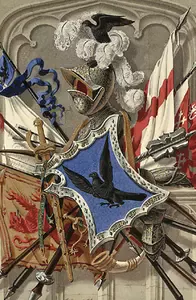- Home
- >
characters of worlds
[ + link to: Characters of worlds - or? ]
The success or failure of an Old Solar System story depend in part on how well the writer can dig into a well-spring of personality, or of local atmosphere, or of the soul or genius loci of a world...
Stid: Not just true of OSS literature. A sense of place is a key ingredient in most good tales.
Zendexor: Yes, but if you'll just let me finish, I want to remark that the OSS gives the writer a special opportunity in this regard.
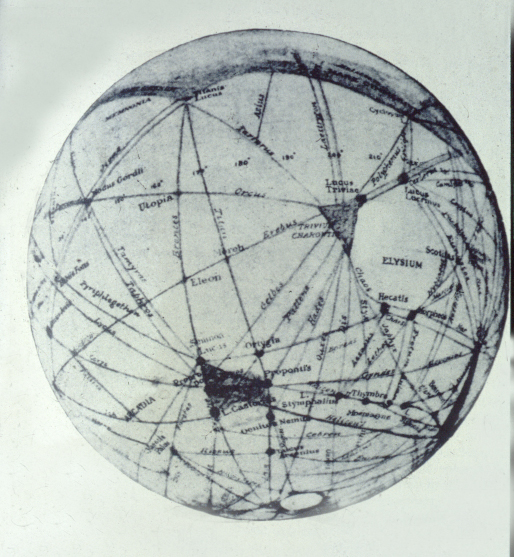 Percival Lowell's Mars
Percival Lowell's Marscharacter accumulation
The OSS planets, or "literary planets" as one might call them - as distinct from the actual objects out there - have been accumulating personality for ages.
At first this was a matter of pagan myth merely, and then of astrology.
But then with the advent of science fiction other shoots sprang from this spiritual soil, nourished also by telescopic observations - whether accurate or mistaken - and scientific speculation - again, accurate or mistaken - by which the whole host of ideas were whisked together into a rich cream of character for each world.
Harlei: I can think of another way of putting it. Something I remember from school. Maths lessons. More specifically: vectors. Remember how you can add all the vectors up -
Zendexor: Yes! Quite! - you add them all up and you get something called the resultant. Good analogy, Harlei. Spot on. Let's apply it to the literature of the Old Solar System.
For instance: the world depicted in The Sands of Mars and that of No Man Friday and that of Red Planet and that of Out of the Silent Planet and that of People of the Talisman and that of The Martian Chronicles and that of the Barsoom series and that of Vulthoom and Seedling of Mars are all vectors, and the resultant of all these vectors is the idea "Mars" in the Old Solar System.
(For measurement of how far a particular story reflects this resultant idea, see the term "goodolbedo" in World of Never-Men.)
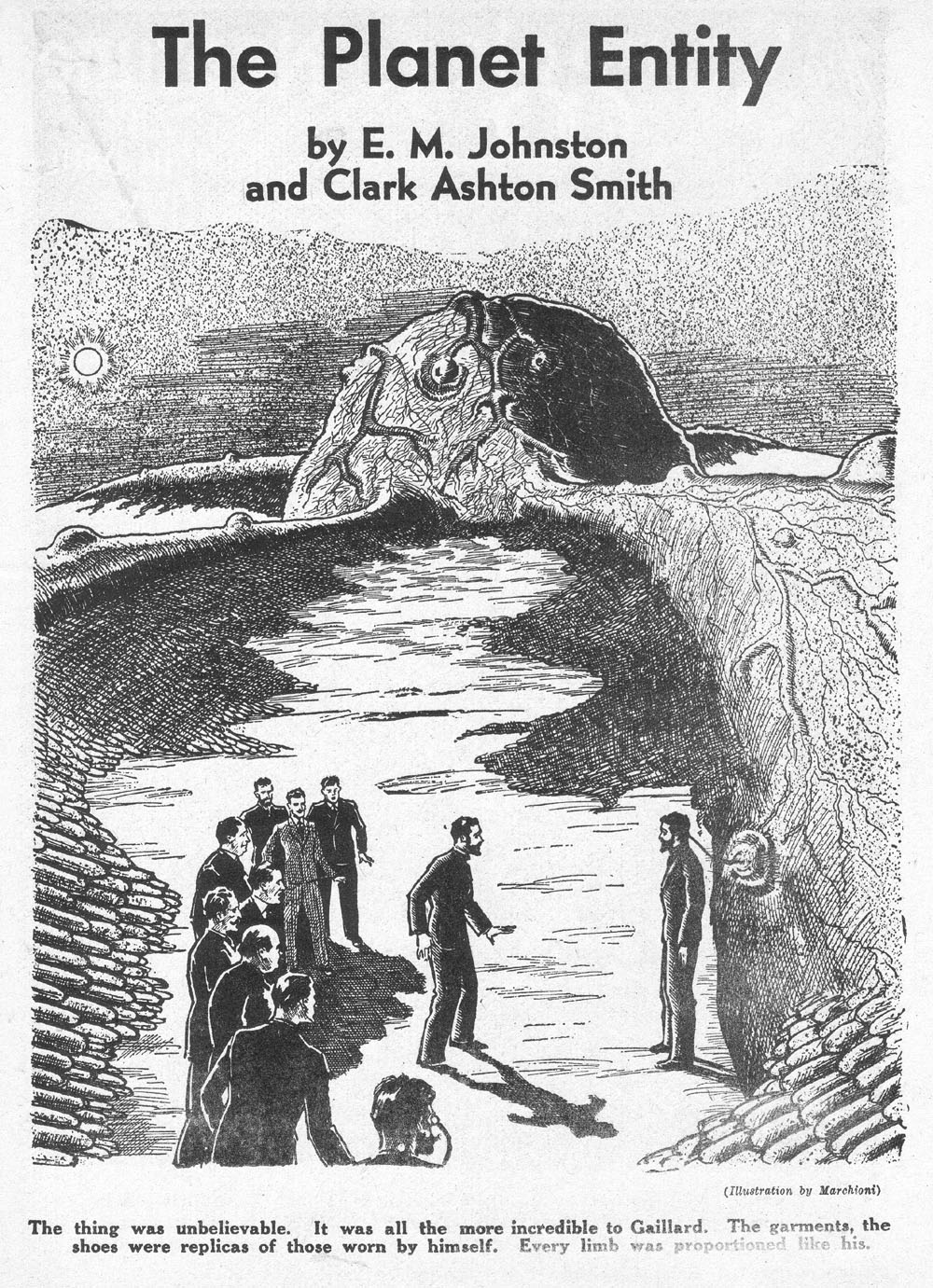 Seedling of Mars
Seedling of Marsthe coherence problem
Stid: All very well, but you've still got problems. At least, you do if you're a literary critic or theorist.
You must still ask yourself: "How does this resultant planetary character cohere?"
With all the inevitable contradictions created by the different ideas, it's a moot point whether such a "character" can exist. If it can't, then the analogy with vectors is a false one.
Harlei: Well, you could go easy to start with. Just have a pair of vectors. Or use Venn diagrams to see the overlap - between, say, the Mars of Seeds of the Dusk and the Mars of Seedling of Mars. Or the Jupiter of Call Me Joe and the Jupiter of Desertion.
Stid: But there's no point in "going easy" - the heaps of contradictory tales exist and, if we're to explain how they pile up or blend into coherent characters of worlds, it's no good just picking out the few easily-matched pairs.
Zendexor: You're right, Stid, the issue has to be faced squarely. I think the Neptunian overlaps discussed elsewhere give us a somewhat more impressive matching. And on the Venus page of this site we really get down to this issue of coherence. Venus is a specially difficult case, so you can't say we're going for the soft option there.
the blank-slate problem
Stid: Venus may be a difficult case but it's not the most difficult of all.
Cases get even harder when the one ancient unifying ingredient, that of myth, is absent - as it must be for worlds which were unknown in antiquity. Such as the outer planets Uranus, Neptune and Pluto, or the Galilean satellites of Jupiter.
Mind you, I've got to hand it to you, Zendexor, you faced that challenge in your page on the Galilean satellites. And in your individual pages on Io, Europa, Ganymede and Callisto. You bested me in that arena, I must admit; at any rate you pulled the wool over my eyes at the time.
But I wonder how you would go about trying to score a similar success with the one planet in the OSS which is neither anciently known nor more recently discovered - the world which has the great disadvantage of utter non-existence -
Harlei: You mean Vulcan? We've dealt with that one. Its unifying principle is easy enough to define. It's so hot, it's character must depend on that - every writer is agreed there...
Stid: No, I do not mean Vulcan. I mean the asteroid progenitor planet! The world which broke up to form the asteroids!
Zendexor: And which, as you say, never existed - because we now know the asteroids to be "unused" rubble left over from planet formation, not the debris of a planetary explosion.
Well now, what do we do to define the character of this mythical "Atlantis of the Solar System"?
There's your clue. The drama, the myth of Atlantis, only bigger. That's what will suffice for the asteroid progenitor...
The myth of a catastrophe caused by foolish meddling or fanatic discord! Thus for example Minerva came to grief in the saga by James P Hogan. Or the fragments by Clark Ashton Smith: Ascharia and The Master of Destruction.
examples of overlap
For the rest of this page, let's build a list of overlaps.
After all, ideas which overlap, that's to say themes which turn out to be common to more than one author's treatment of a world, are the life's blood of character-building of OSS worlds. And to watch it happen - as the literature shapes up - is a bonus fascination which adds to one's appreciations of the individual works.
I'll start it with a Venusian theme.
castles of venus
Skor's castle, in Lost on Venus, and Thorstern's in Sentinels from Space, give us two images which slide part-way across each other like the circles of a Venn diagram.
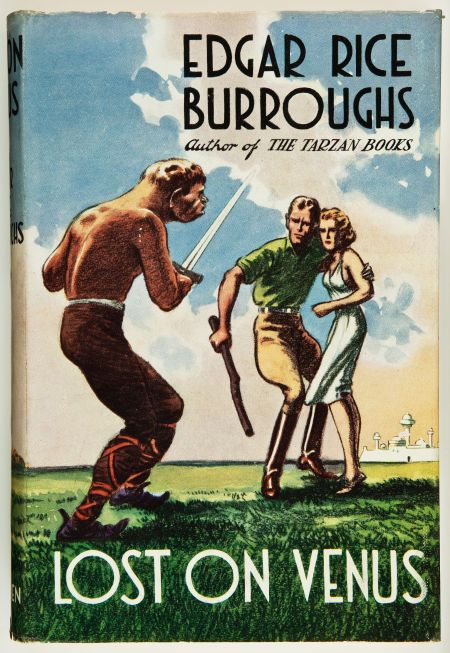
Shortly after we entered the forest we came upon a large, gloomy, fortress-like building of stone. It was built upon a low rise of ground at the water's edge, the river lapping the masonry upon that side. A stone wall connecting with the river wall of the building enclosed several acres of clear land in front of the structure. A heavy gate closed the only aperture that was visible in this wall.
As we approached, Skor shouted, "Open! It is the jong," and the gates swung slowly outward.
As we entered, several armed men, who had been sitting beneath one of the several trees that had been left standing when the ground was cleared, arose and stood with bowed heads. They were a hard and also a sad looking lot...
That's the sinister castle we first meet on p79-80 of Lost on Venus, book 2 of the Amtor series. For our next example, first see where we introduce Thorstern's equally grim stone pile with a quotation from pages 106-7 of Sentinels of Space.
And the book gives us lots more about it: intrigues, surprises, clashes, deaths, dramatic nocturnal scenes... written with a continually strong "smell of place".
A thin orange-colored ray shot from a corner turret of the castle, spiked through overhead cloud, remained gleaming steadily. Noise of vanes grew louder as the oncoming machine gradually lowered toward the beacon. A minute later it was immediately above, at a few hundred feet and making an explosive roar. There was a distinct downdraft from it. Fog coiled and swirled below it, oozing its scents from far-off jungles.
Guided by its own instruments or by radioed instructions from the ground, the copter lowered into the mist, descended through it, landed on the graveled area outside the gate. The orange beam cut off. Several pairs of feet ran though the courtyard and out the gate toward the new arrival...
[Sentinels from Space, p140]
glowing globular martians
"They'll come!" But Father Peregrine felt the panic in his chest, very small, growing. "Let us pray. Let us ask them to come. They read minds; they know."
The Fathers lowered themselves yet again, in rustlings and whispers. They prayed.
And to the East, out of the icy mountains of seven o'clock on Sunday morning or perhaps Thursday morning or maybe Monday morning on Mars, came the soft fiery globes.
They hovered and sank and filled the area around the shivering priests...
- The Fire Balloons
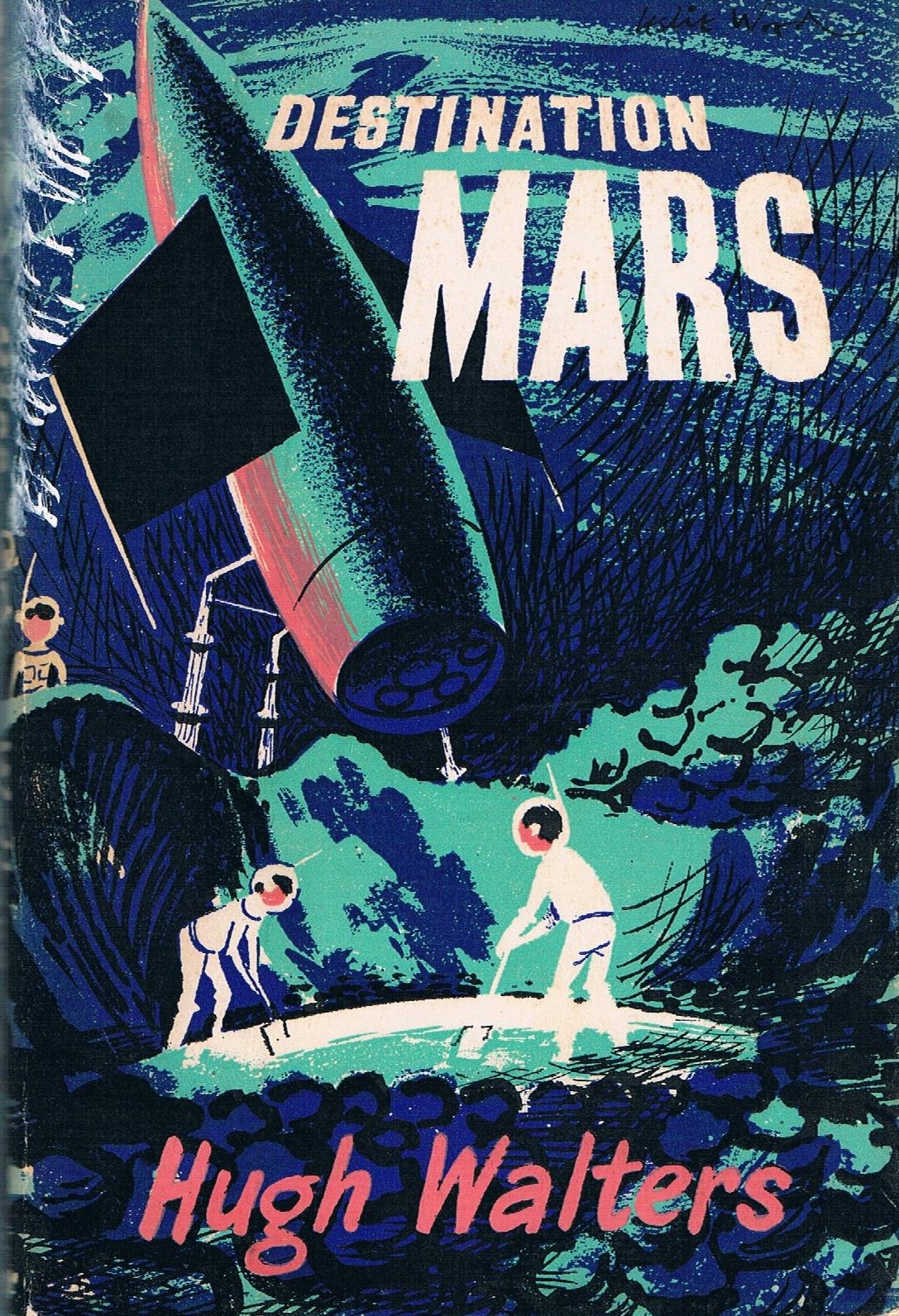
He turned over restlessly on his couch. He shut his eyes and tried to picture what the Martians might have been like. For a long time he lay still and allowed his thoughts to wander. Somehow he couldn't picture what the Martians might have been like. All the impression he got was on a glow, a ball of gentle light. One of these glows seemed to have entered the cabin and wanted to talk to him...
- Destination Mars
In both tales, the Martians have long ago given up material existence and have become a race of glowing, spherical, disembodied energy-beings. In Bradbury's story they are a force for good, in Walters' a force for evil; but their physical natures overlap.
recreating extinct humanity
More than once, on a fictional far-future Earth, we find that humanity's extinction is not the end. We are brought back.
Already on our hyper-brains page we have discussed the epic saga of the Third, Fourth and Fifth Men in Stapledon's future history. The Fourth Men - the Great Brains - were human in origin and yet had been biologically engineered to lack all of our attributes except the intellect. They were pure brain, their tissues honeycombing the towers that had been built for them by their enslaved human predecessors.
After long ages of futile intellection, the lonely Brains realized that they lacked something essential in their quest for truth. They set about the task of engineering a race which could supply what they themselves lacked: namely, those insights which derive from love and spirituality.
Only by a miracle of pure intellectual skill could the cold-natured Great Brains, who were themselves doomed never to have actual experience of such activities, contrive, merely by study of the Third Men, to see their importance, and to design an organism splendidly capable of them. It was much as though a blind race, after studying physics, should invent organs of sight.
- Last And First Men
Stid: You could say this doesn't literally count as a recreation of humanity, since the Fourth Men themselves were men of a sort. Descended from men, anyhow.
Zendexor: The theme nevertheless fits closely enough to match with my second example, a tale in which Man is definitely, thoroughly extinct - the beautiful novelette, For A Breath I Tarry.
This classic future-Earth tale is an epic of re-creation. It's hard to do it justice because the narrative's musical flow makes it hard to tear out lumps to quote. The story begins:
They called him Frost.
Of all things created of Solcom, Frost was the finest, the mightiest, the most difficult to understand.
That is why he bore a name, and why he was given dominion over half the Earth.
On the day of Frost's creation, Solcom had suffered a discontinuity of complementary functions, best described as madness. This was brought on by an unprecedented solar flareup which lasted for a little over thirty-six hours. It occurred during a vital phase of circuit-structuring, and when it was finished so was Frost...
Relics of Man's extinct civilization, the four mighty, lonely machines - namely Solcom who orbits the world, the subterranean Divcom, the North Polar supervisor Frost and the South Polar supervisor Beta - maintain the infrastructure of the world as ages go by. Supposedly emotionless, yet they seem to harbour analogues to emotion.
For ten thousand years Frost sat at the North Pole, aware of every snowflake that fell; and aware of many other things, also.
As all the northern machines reported to him, received all their orders from him, he reported only to Solcom, received his orders only from Solcom.
In charge of hundreds of thousands of processes upon the Earth, he was able to discharge his duties in a matter of a few unit-hours every day.
He had never received any orders concerning the disposition of his less occupied moments.
He was a processor of data, and more than that.
He possessed an unaccountably acute imperative that he function at full capacity at all times.
So he did.
You might say he was a machine with a hobby.
He had never been ordered not to have a hobby, so he had one.
His hobby was Man...
Frost studies the remains of Man, and in doing so he displays an intensifying obsession with the vanished species that once ruled Earth. Frost therefore has one vital Manlike trait: curiosity. Meanwhile the two most godlike machines, Solcom and Divcom, develop a different trait, likewise analogous to human emotion - in their case, rivalry.
High, in a permanent orbit, Solcom, like a blue star, directed all activities upon the Earth, or tried to.
There was a Power which opposed Solcom.
There was the Alternate.
When Man had placed Solcom in the sky, invested with the power to rebuild the world, he had placed the Alternate somewhere deep below the surface of the Earth. If Solcom sustained damage during the normal course of human politics extended into atomic physics, then Divcom, so deep beneath the Earth as to be immune to anything save total annihilation of the globe, was empowered to take over the processes of rebuilding.
Now it so fell out that Solcom was damaged by a stray atomic missile, and Divcom was activated. Solcom was able to repair the damage and continue to function, however.
Divcom maintained that any damage to Solcom automatically placed the Alternate in control.
Solcom, though, interpreted the directive as meaning "irreparable damage", and since this had not been the case, continued the functions of command.
Solcom possessed mechanical aides upon the surface of the Earth. Divcom, originally, did not. Both possessed capacities for their design and manufacture, but Solcom, First-Activated of Man, had had a considerable numerical lead over the Alternate at the time of the Second Activation.
Therefore, rather than competing on a production-basis, which would have been hopeless, Divcom took to the employment of more devious means to obtain command.
Divcom created a crew of robots immune to the orders of Solcom and designed to go to and fro in the Earth and up and down in it, seducing the machines already there. They overpowered those whom they could overpower and they installed new circuits, such as those they themselves possessed.
Thus did the forces of Divcom grow...
The way in which the powers interact, so that the mechanical analogues of human emotion eventually lead to the design and production of a pair of real human beings, gives the tale its unforgettable quality of "hard myth", realistic myth - almost, one might say, metalled myth, as the story moves, full of haunting imagery and subtle analogy, towards its spellbinding climax.
Archetypally, it contributes - as do the middle chapters of Last And First Men - to one distinct strand of the OSS Earth: an echoingly silent far-future Earth, inhabited by a few giant, brooding Brains, whether mechanical or organic, whose sense of inadequacy or loss brings them eventually to inaugurate a second Genesis.
mercurian linguistics
See the Mercury page and the alien scripts page for overlapping links between that planet and the theme of language. See also the discussion between Robert Gibson, Zendexor and Dylan regarding influences on Valeddom.
venusian shape-deceivers
Here's a triple overlap: Counterfeit, Three to Conquer and The Purple Sea. The three tales are very distinct in mood, style and atmosphere, yet all associate Venus with the idea of: "watch out, these human shapes are not what they seem".
io as a forbidden world
See the note after the extract Purple spiders and glittering fungi on Io, concerning the overlap in themes between tales by Raymond Z Gallun and Hal K Wells.
soft-bodied foes from titan
The invaders we get in The Puppet Masters are loathsome parasites, whereas Earth's foes in The Game Players of Titan have their decent side; but both novels show the overlap of the idea, "Titan - Soft-bodied enemy intelligence".
uranian burrowers
Overlaps can be observed between the ideas in The Hashish Eater (re mole-like Uranians), Lilith (re burrowers on the plains) and The Planet of Doubt (re blind many-legged creatures). (See Three Strikes and You're In.) More peripherally connected with the underground theme are the Uranian caverns in The Magician of Mars and the inter-atomic travel in Uranian Thule.
Poul Anderson, "Call Me Joe" (Astounding Science Fiction, April 1957); Leigh Brackett, People of the Talisman (1964); Ray Bradbury, The Martian Chronicles (1950); "The Fire Balloons" in The Illustrated Man (1951); Edgar Rice Burroughs, the Barsoom series (1911-43) and the Amtor series (1934-1946); Arthur C Clarke, The Sands of Mars (1951); Philip K Dick, The Game Players of Titan (1963); Raymond Z Gallun, "Seeds of the Dusk" (Astounding Science Fiction, June 1938); Robert Gibson, Valeddom (2013); "Uranian Thule" in Vintage Worlds 1 (2018); Rex Gordon, No Man Friday (1956); Edmond Hamilton, The Magician of Mars (1941); Robert A Heinlein, Red Planet (1949), The Puppet Masters (1951); Dylan Jeninga, "The Purple Sea" (displayed on this site till September 2020; withdrawn at author's request prior to submission elsewhere); C S Lewis, Out of the Silent Planet (1938); George MacDonald, Lilith (1895); Alan E Nourse, "Counterfeit" (Thrilling Wonder Stories, August 1952); Olaf Stapledon, Last And First Men (1930); Eric Frank Russell, Sentinels from Space (1952); Three To Conquer (1955, 1956); Clifford D Simak, "Desertion" (Astounding Science Fiction, November 1944); Clark Ashton Smith, "Seedling of Mars" (Wonder Stories Quarterly, Fall 1931; titled "The Planet Entity" and after a plot by E.M.Johnston); "Vulthoom" (Weird Tales, September 1935); "The Hashish Eater" (poem, 1922); for the fragments "Ascharia" and "The Master of Destruction" see the CAS website the eldritch dark and Strange Shadows: the uncollected fiction and essays of Clark Ashton Smith (ed. Steve Behrends, 1989); Hugh Walters, Destination Mars (1963); Stanley G Weinbaum, "The Planet of Doubt" (Astounding Stories, October 1935); Roget Zelazny, "For A Breath I Tarry" (Fantastic, September 1966)
For the physics of literary space, including fictons and coincidons and the Z-mass scale, see Venus - The Long Rain and the Big Rain.
For the insights in Perelandra on the "whispering gallery" of myth-echoes, see the OSS Diary for 28th December 2016.
See also the immediately preceding entry, Holidaying on the Planet of Love.
For issues raised by Liz Williams' Out of Scarlight, see the report Out of... Mars? by Dylan Jeninga.
For the flavour of Neptune as built up in Wonder Stories Quarterly, see Neptunian Allure.
See Bifurcated Souls: France - OSS for a comparison between incompatible visions in interplanetary literature and a comparably split personality in Terran culture.
See A Martian Trait - Brain-Swapping Surgery for an overlap between Burroughs and Hamilton.
"Lone Wolf" has explored the concept of literary reality in Characters of Worlds or...? - taking the question as far as the idea of "psychonaut" travellers into literary worlds.
See Mature Martians for the theme of the Red Planet's wise limits to technology, as explored by three different authors.
For caterpillar-like Jovians see the note to Native life breaks in to colonial dome on Jupiter.












